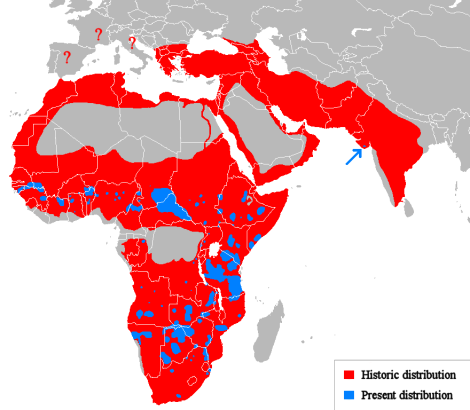Lions seem fierce, loud, well-coiffed — basically the Beyoncé of the animal kingdom. They certainly don’t seem vulnerable. But that’s the classification the International Union for the Conservation of Nature (IUCN) has given African lions. (In West Africa in particular, they’re endangered. How can this be?!)
But because a picture’s worth a thousand Beyoncés, check out the following map of African lions’ habitat, which has shrunk drastically in the past few decades. The red shows where lions used to roam, and the blue is their much smaller current territory:

WikipediaClick to embiggen.
Treehugger unearthed the image, which Wikipedia user Tommyknocker created in 2009 with this explanation:
The present distribution in Africa is based upon a map created by The African Lion Environmental Research Trust (ALERT), which can be viewed here. While I consider this a reliable source, I researched two countries in depth to verify this, Uganda and Namibia. The map is indeed correctly shaded in the National Parks where lions are present…For the historic distribution, which will never be completely accurate, I used information here on Wikipedia with its own sources.
Treehugger notes that there were roughly 400,000 lions in Africa in 1950, but the population has shrunk by about 90 percent since then, with only 16,500 to 47,000 lions remaining in the wild (habitat loss, disease, and people are to blame). As the IUCN cautions, “Estimating the size of the African Lion population is an ambitious exercise involving many uncertainties.” But it’s safe to say there are WAY fewer lions today than there used to be.



